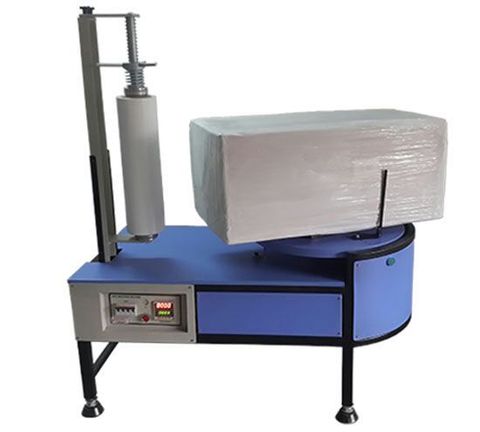AI Vision Systems: Complete Guide to Basics, Insights, and Key Knowledge
AI vision systems—often called computer vision—are technologies that enable machines to “see,” interpret, and make decisions based on visual inputs such as images or video. These systems use artificial intelligence (especially deep learning) to analyze and understand the visual world.
At their core, AI vision systems mimic parts of human vision: they detect shapes, colors, movement, and context, then translate that into data a computer can act on. This capability arose because many real-world problems (like quality control, robotics, autonomous vehicles, and security) naturally involve visual information. Traditional programming could not handle the complexity and variability of visual data; AI provides a way to learn from large datasets and generalize to new, unseen inputs.
Why AI Vision Matters Today
Broad Impact Across Industries
-
In manufacturing, AI vision systems spot defects on fast-moving production lines more accurately than humans.
-
In healthcare, they help analyze medical images (X-rays, MRIs), aiding faster diagnosis and treatment.
-
For autonomous vehicles, vision systems recognize pedestrians, traffic signs, and obstacles in real time.
-
In retail, they power cashier-less stores and inventory tracking, transforming how shopping works.
Efficiency and Automation
By automating visual inspection and monitoring, AI vision reduces cost, accelerates workflows, and improves consistency.
Privacy and Edge Processing
With edge AI—including on-device vision—processing happens locally, reducing latency and minimizing data sent over networks.
Innovative Research
Newer techniques like self-supervised learning reduce dependence on large labelled datasets, making it easier to build vision systems. Vision transformers (ViTs), which process images differently than traditional convolutional neural networks, are pushing performance boundaries.
What’s New: Recent Trends in AI Vision (2024–2025)
-
Rise of Vision Transformers (ViTs): These models process images as sequences of patches (similar to how language models process text) and are increasingly preferred over convolutional models for many tasks.
-
Self-Supervised Learning: It’s gaining traction, allowing vision systems to learn from unlabeled or partially labeled data, dramatically reducing the cost and effort of annotation.
-
Edge Vision: Deploying models directly on devices such as smartphones, drones, or embedded sensors is growing rapidly.
-
Multimodal Integration: Computer vision is merging with other modalities like natural language or audio (vision-language models) to build richer, more context-aware systems.
-
Physical Generative AI: A newer area where generative models not only produce realistic images, but also respect physical constraints (important in robotics or simulation).
-
Security Risks / Adversarial Attacks: New attacks can subtly manipulate images to fool vision models without visible changes to humans, raising safety concerns.
-
Robot Self-Learning via Vision: Some AI systems allow robots to teach themselves to control their bodies using just a single camera, mapping visual input to physical movement.
How Laws and Policies Influence AI Vision
AI vision systems don’t operate in a vacuum—governments and regulators are increasingly addressing how these systems should be used, especially around transparency, safety, and misuse.
-
India: Proposed rules for labeling AI-generated visual content (e.g., deepfakes). Public-facing AI-generated images must carry a visible marker covering at least 10% of the image.
-
United States: Some lawmakers introduced a 10‑year framework for federal oversight of AI applications.
-
Security Considerations: Given risks like adversarial attacks, there is growing pressure to regulate the robustness and safety of vision systems—especially in critical applications like autonomous driving or surveillance.
These regulations show that as vision AI becomes more powerful, policymakers are balancing innovation with public safety, privacy, and trust.
Key Tools and Resources for Working with AI Vision
Here’s a list of common tools, libraries, and platforms used in computer vision development:
-
OpenCV: Open-source library for real-time image processing.
-
OpenVINO: Intel’s toolkit for optimizing and deploying deep learning vision models on hardware; latest release in September 2025.
-
OpenVX: Cross-platform API for efficient graph-based vision processing, especially on embedded systems.
-
PyTorch + TorchVision: Flexible tools for research and experimentation in computer vision.
-
Detectron2: Framework for object detection and segmentation, including Faster R-CNN and Mask R-CNN.
-
CVAT (Computer Vision Annotation Tool): Web-based tool for annotating images and video; supports detection, segmentation, classification.
-
Kornia: Differentiable computer vision library built on PyTorch; includes image transformations and geometric vision routines.
-
Deeplearning4j: Java-based deep learning library that supports machine vision; good for JVM environments.
These tools help both beginners and advanced users—from data annotation to model optimization and deployment.
Frequently Asked Questions
Q: What is the difference between computer vision and AI vision?
A: They are largely the same. Computer vision is the field; AI vision systems refer to applying AI (especially deep learning) to interpret visual data.
Q: Do I always need huge datasets to train vision models?
A: Not always. Techniques like self-supervised learning reduce dependency on labeled data, and synthetic data can help where real data is scarce.
Q: Can vision AI run on low-power or edge devices?
A: Yes. With edge AI, vision models are optimized to work efficiently on smartphones, cameras, drones, or IoT devices.
Q: Is computer vision safe from adversarial manipulation?
A: No—there are known attacks that can fool vision models without visible signs to humans. Security and robustness are active areas of research.
Q: How do regulations affect using AI vision systems?
A: Depending on the country, there may be rules on how AI-generated images should be labeled or broader legislative proposals on AI oversight.
Conclusion
AI vision systems are reshaping how machines interact with the physical world, enabling a wide range of applications across industries. These systems exist because visual data is everywhere—and interpreting it intelligently unlocks powerful automation, insights, and innovation.
Today, advances like vision transformers, self-supervised learning, and edge deployment are pushing computer vision forward faster than ever. At the same time, emerging security threats and regulatory frameworks are forcing developers, companies, and governments to think carefully about safety, privacy, and responsibility.
Whether you're just learning about computer vision or planning to build your own vision-based application, the tools and trends covered here provide a strong foundation. By staying informed about both technical advances and policy developments, you can understand not just what AI vision systems can do, but also how they should be used in a trustworthy and ethical way.






